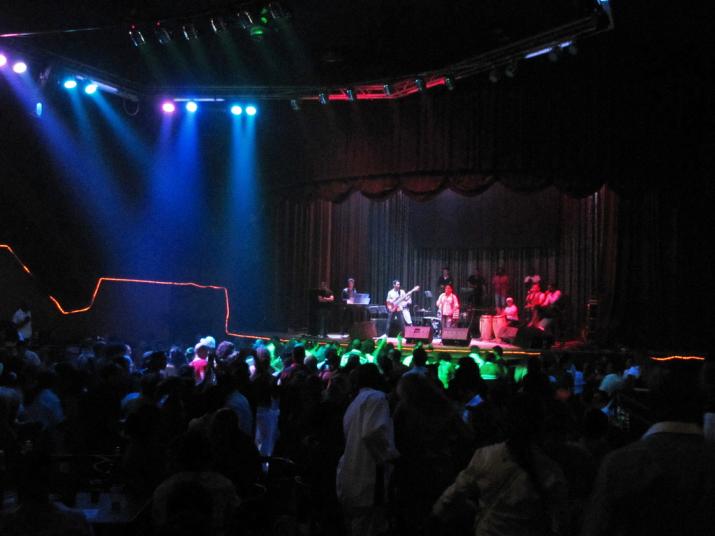![cuba 2013]()
For many people the question isn’t if to come to Cuba, but when. Like with any trip, there are the usual considerations – when you have time off, family obligations, your financial situation, and the weather – but to maximize your experience here, it pays to plan ahead. Visitors from the United States are subject to restrictions under the Travel Ban, so have even more reason to plan with care since it may be the first (hopefully not the last!) time they set foot on the ‘Forbidden Island.’
Whether it’s your first or fifth time here, some general timing elements are worth a mention. Importantly, hurricane season (June 1- November 30) should not be cause for anxiety: I’ve experienced many hurricanes here over the years and have covered Cuba’s disaster preparation and response in my work as a journalist and the Cuban strategy – for keeping both locals and tourists out of harm’s way – is effective.
While the fixed itineraries of People-to-People programs may or may not include the events listed below, the cultural happenings, opportunities for meaningful exchange with Cubans, and the energy accompanying these festivals and fiestas are superlative.
If 2013 is your year for Cuba travel, try and coincide your trip with one of these exciting festivities:
Festival Habanos | February 26-March 2
www.habanos.com/festival.aspx?fid=12&mid=95&lang=en
As a daily cigar smoker, I love this annual event where cigar aficionados from around the world come to sample Cuba’s smokeable delights. What’s more, fine tobacco is handed out like candy and proceeds from the art auction go to the Cuban health system. Auxiliary events include concerts, trips to tobacco-growing regions, and cigar factory tours.
Habana Vieja: Ciudad en Movimiento | April 10-14
http://www.danzateatroretazos.cu/index.php/festivales/festival-ciudad-en-movimiento
Havana Vieja, designated a UNESCO World Heritage Site 30 years ago, is Cuba’s #1 tourist destination with reason. The history is palpable in its colonial palm-shaded plazas, people bucket-hauling water testify to its present, and new private businesses hint at its future. But Havana’s historic core roars to life during this festival when dancers of all types use the streets as their stage, performing day and night in rehearsed and impromptu dance performances.
Cine Pobre | Late April, early May (dates to be announced)
http://www.festivalcinepobre.com/gibara
Cuba’s wildly successful budget film festival (now in its 11th year) takes over this seaside town 45 minutes from Holguín each spring with movie screenings, star-studded conferences and raucous concerts and parties. It’s a wonderful setting for cultural exchanges and seeing what young, hungry filmmakers are up to.
Romerias del Mayo | May 2-8
http://romeriasdemayo.blogspot.com/
The first week in May, Holguín (the ‘City of Parks’) transforms into the country’s hub of youth culture, with the next generation of artists from all genres strutting their stuff in parks, plazas, public spaces and galleries. Actors, painters, musicians, dancers and more hold workshops, concerts, exhibits and performances in this not-to-be-missed event in eastern Cuba.
International Anti-Homophobia Day | May 17
http://www.cenesexualidad.sld.cu/
Sexual diversity has come a long way in Cuba in recent years, thanks in large part to work by the Centro Nacional de Educacion Sexual (CENESEX) and programs focusing on homophobia, machismo and related bias. This event, kicked off with a parade in the heart of Vedado, is now a highlight of the spring calendar when the tribe gathers for workshops, panels, concerts, and an absolutely fabulous gala at the Karl Marx theater.
La Fiesta del Fuego | July 3-9
http://www.casadelcaribe.cult.cu/
Folks in the know will tell you: Santiago de Cuba throws a great party – especially in July when this celebration of Caribbean culture rolls into the ‘Heroic City.’ Despite the damage wrought by Hurricane Sandy, Fiesta del Fuego 2013 promises to renew the energy of Cuba’s first capital with exuberant parades a la Carnaval, free outdoor concerts, and loads of cheap food and drink.
Ballet Festival | Late November to early December
www.balletcuba.cult.cu/
The legendary Cuban prima ballerina Alicia Alonso was recently named UNESCO Goodwill Ambassador and this festival is the perfect time for ballet buffs to be in Havana. In addition to international companies, the Nacional Ballet de Cuba always has multiple performances, and the streets are full of dancers and their fans making their way from theater to theater to take in all kinds of dance, not just ballet.
Festival de Nuevo Cine Latinoamericano (Havana Film Festival) | First week of December
www.habanafilmfestival.com/
The US has Sundance, France has Cannes, and Havana has this world-renowned festival featuring films, documentaries, and shorts from Cuba, the region, and the world. Headquartered at the Hotel Nacional, this is an exciting time to be in Havana when film fanatics, stars, directors, and distributors hop from cinemas, to concerts, to notorious after-parties.
Festival Internacional Jazz Plaza | Early to late December
www.jazzdecuba.com
Chucho Valdés, Wynton Marsalis, Roy Hargrove – giants of jazz play their hearts out each December at this music festival where the jams, concerts, and parties test the stamina of the most die-hard night owls. With multiple performances by established and up-and-coming musicians, there is no better event to test the pulse of Cuban jazz and hear world-renowned players at affordable prices.
Conner Gorry is Senior Editor at MEDICC Review and author of the Havana Good Time app, available for iOS and Android. She blogs at Here is Havana and has two Cuba stories in the anthology Best Travel Writing 2012.





































































